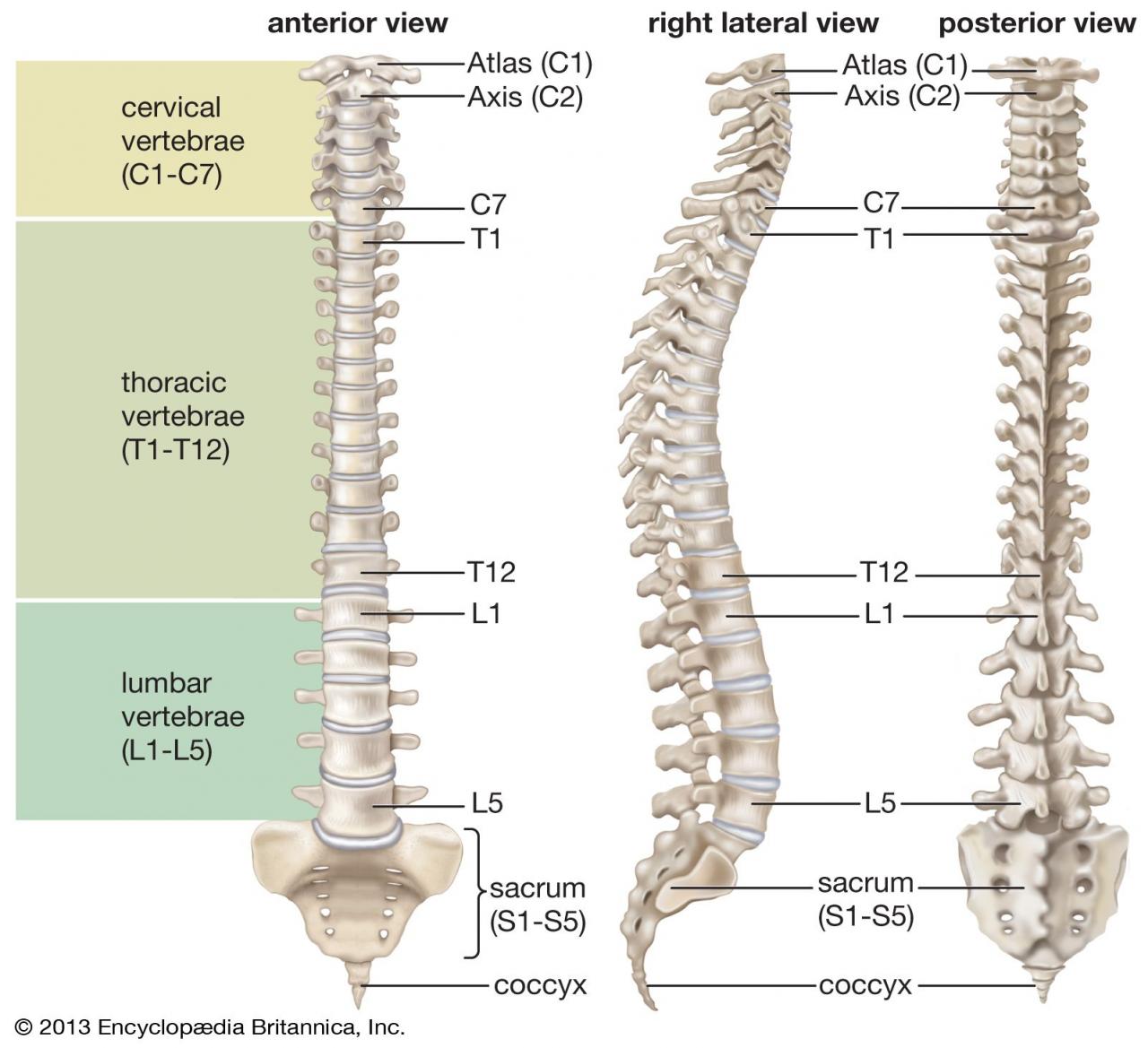The human body is a marvel of engineering, and at its core is the vertebral column, also frequently referred to as the spinal column or simply the spine. This intricate structure not only supports our body but also protects the delicate spinal cord that serves as a superhighway for nerve signals.

Constructed of a series of bones known as vertebrae, each of these is distinctively separated and united by what is called an intervertebral disc. When combined, the vertebrae and these discs form the entire vertebral column. Dive deeper, and you’ll find that the vertebral column is made up of 33 vertebrae, classified into different areas based on their location and function. These are:
Cervical Spine: This is the topmost section located in the neck and consists of 7 bones. The first cervical vertebra plays a crucial role as it supports the skull. Interested to learn more? Check out this in-depth article from URMC Rochester.
Thoracic Spine: Located in the upper and mid-back, this section comes next to the cervical spine.
Lumbar Spine: This section is located in the lower back. For a deeper dive into spine disorders related to these regions, consider reading this detailed guide at Columbia Neurosurgery.
When discussing the skeleton, it’s divided into two main parts: the axial skeleton and the appendicular skeleton. The axial skeleton forms a vertical axis that comprises the head, neck, back, and chest. This includes the skull, vertebral column, and thoracic cage. You can get a detailed breakdown at Pressbooks OER Hawaii.
Soft tissues like the spinal cord, spinal nerves, discs, and ligaments are vital, even if they don’t usually show up on X-rays. For a comprehensive look at the anatomy of these structures and their relationship to the vertebral column, this WSU Medicine article offers valuable insights.
The development of the vertebrae provides clues about an individual’s age. During the early stages of development, there are three separate portions: the two neural arches and the body. These neural arches fuse first, typically between the ages of 2-4. To explore this fascinating topic further, GVSU Pressbooks offers a comprehensive guide.
Lastly, it’s worth noting that the vertebral column doesn’t just provide structural support. It plays a pivotal role in allowing movement, rendering flexibility to our body. With 24 presacral vertebrae (7 cervical, 12 thoracic, and 5 lumbar), followed by the sacrum and coccyx, this structure is both robust and versatile. For those interested in diving deeper, Plymouth Press has a thorough exploration of the topic.


